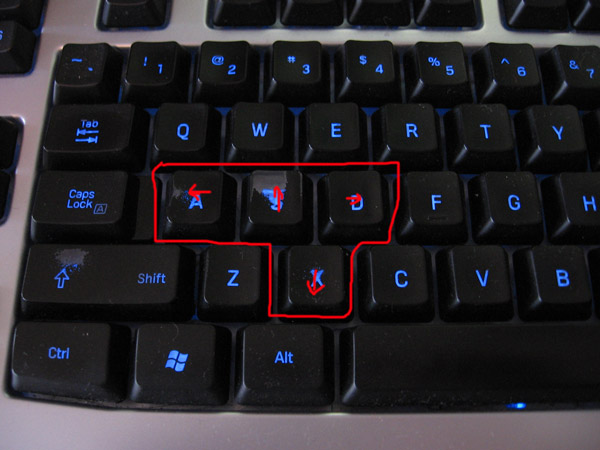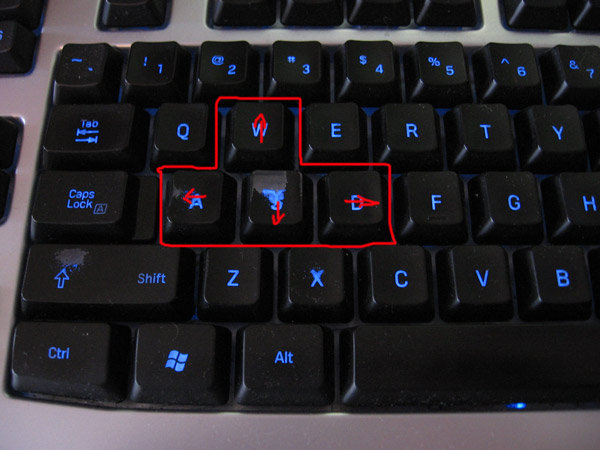Many weblogs dwell on the inner thoughts and feelings of individuals, allowing readers a glimpse into the psyche of the writer as they move through life. Cruft has never really been a place to talk about my life in such personal terms, mainly a place for Cruft Labs research and other whimsical thoughts. Prepare yourself for something just a little different here.
Today I write about a significant personal transformation for myself. I’ve had this issue for years but few knew about it. Only those deep into the subculture could relate to my dilemma. Even my wife was unaware of what was going on. Recently, I’ve taken the tough steps to rectify the situation and approach normalcy.
Please don’t be shocked by what I reveal here, though it may make some of you queasy.
Enough of the preamble, onto the story. It’s been a tough three weeks for me, but I’m past the worst of it now.
I’m sure surprising to many, I broke my habit of using ‘ASDX’ for movement in games and finally switched to ‘WASD’.
Yes, I can admit it freely now that I used ‘ASDX’ for movement in video games for well over five years.

For those not deep into the video game subculture, most people use the traditional ‘WASD’ to move around.

For some reason, lost in my troubled past, I began using ‘ASDX’ instead. Oh the trouble it caused…
Imagine my shame at going to E3 and not being about to pwn newbs since the ‘WASD’ default setting was in place on every game. Sneakily, I would reassign the controls and hope no one would notice my ‘problem’.
I mentioned it casually to a few co-workers, hoping someone would help and see my pain, but all I got was rolled eyes and few ‘Dude, that’s just wrong.’ comments. At home, my daughters would ask about the keys and I would lie and say, “That’s simply the way it is…”
Recovery
A little over three weeks ago, a corrupted Windows registry led to me deciding to do a clean install of Windows on my desktop. As a result, I had to reinstall my games. I loaded Battlefield 2 and World of Warcraft and was ready to play. It was at this point I mustered all my courage and refused to change the key bindings.
Oh, the horror of getting pwned over and over and my fingers tried to learn how to move again. Time and time again, I’d futilely hit the Q and E while getting mowed down. I really wanted to give up and give into the call of ‘ASDX’. Instead, I drank a nice glass of scotch to steel my nerves and continued to endure the pain of ‘WASD’.
Steadily I kept at it until my very muscles relearned their tasks and I began to pwn again.
Today I feel much more comfortable with my new habits and no longer want to give up and go back to ‘ASDX’. To anyone that is trapped in the world of ‘ASDX’, I can offer hope that you too can get through your issues and find some peace in ‘WASD’.
Thanks to you Loyal Cruft Readers for your support as I continue through this significant personal transformation.





















